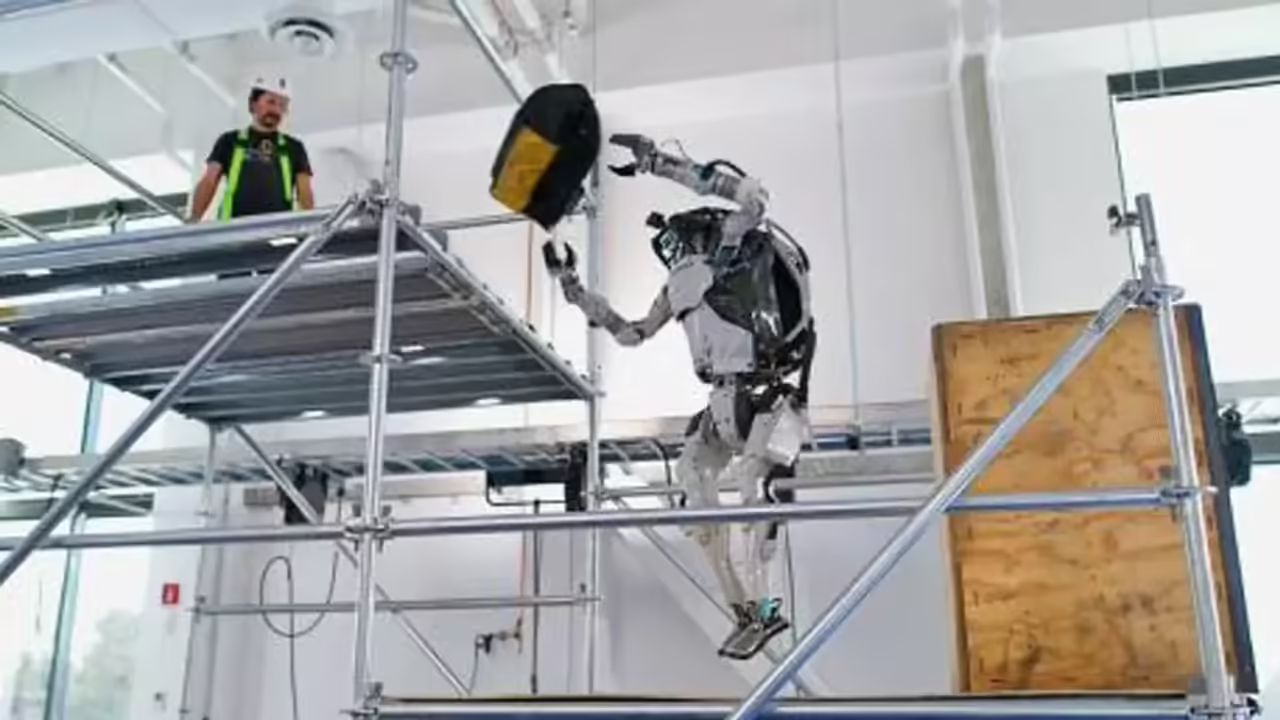
In a world marked by rapid technological advancement, it comes as no surprise that the future of cell phones promises to be nothing short of extraordinary. These small handheld devices have evolved from basic communication tools to powerful pocket-sized computers, and their journey into the future is poised to redefine how we connect, work, and interact with the world around us.
The Current Landscape
Before diving into the future, let’s take a moment to reflect on the present. Our current smartphones are marvels of modern engineering, boasting stunning displays, impressive cameras, and the ability to perform tasks that were once unimaginable. They have become an integral part of our daily lives, serving as not just communication devices, but also as personal assistants, entertainment hubs, and productivity tools.
What Lies Ahead
So, what can we expect from the cell phones of the future? Several exciting trends and technologies are already on the horizon:
5G Connectivity: The rollout of 5G networks promises lightning-fast internet speeds and minimal latency, opening the door to augmented reality, virtual reality, and more immersive experiences on our phones.
Flexible Displays: Foldable and rollable screens are making waves in the industry, offering enhanced portability without sacrificing screen real estate.
Artificial Intelligence (AI): AI-powered smartphones will become even more adept at understanding and anticipating our needs, simplifying tasks, and personalizing our interactions.
Enhanced Security: Biometric authentication methods, such as facial recognition and fingerprint scanning, will become even more secure and integrated into our daily routines.
Extended Battery Life: Breakthroughs in battery technology will grant us longer usage times and reduced dependency on charging.
Sustainability: Future phones will prioritize eco-friendly materials and manufacturing processes to reduce their environmental impact.
Health and Wellness Features: Phones will play an increasingly vital role in monitoring our health, with built-in sensors and apps tracking everything from heart rate to sleep patterns.
Challenges and Considerations
However, as we embrace this promising future, there are challenges to address. Privacy concerns related to AI, the environmental impact of manufacturing, and the need for robust cybersecurity measures will be critical considerations.
Current Trends in the Smartphone Industry
The smartphone industry is continually evolving, reflecting the rapid pace of technological advancement and its profound impact on our daily lives. Here are some of the most notable trends in the world of smartphones in recent times:
5G Connectivity: The gradual rollout of 5G networks has been one of the most significant trends. This provides lightning-fast connection speeds and reduced latency, enabling smoother experiences in streaming, online gaming, and augmented and virtual reality applications.
Foldable and Rollable Displays: Smartphones with foldable and rollable screens have begun gaining traction in the market. These devices offer the versatility of a compact phone when closed and a larger screen when opened, providing new ways to interact with technology.
Advanced Cameras: Smartphone cameras continue to improve, featuring higher-resolution sensors, stabilization technology, and high-quality video recording capabilities. Computational photography and AI capabilities are leading to significant enhancements in photo and video quality.
Artificial Intelligence (AI): Smartphones are harnessing AI for a variety of functions, from image processing to optimizing battery life. Virtual assistants like Apple’s Siri, Google Assistant, and others are becoming more sophisticated.
Increased Storage Capacity: With the growing amount of apps, photos, videos, and files we store on our devices, manufacturers are increasing smartphone storage capacity. Additionally, cloud storage is being integrated to support data backup and synchronization.
Biometric Security: Biometric security, such as facial recognition and fingerprint authentication, has become standard in many smartphones, enhancing data security.
Sustainability: Consumers and businesses are paying more attention to sustainability in smartphone manufacturing and usage. This includes the use of recycled materials and more environmentally friendly manufacturing processes.
Gaming Phones: Smartphones designed specifically for gaming are gaining popularity, featuring high-refresh-rate displays, advanced cooling capabilities, and customizable controls.
Health and Wellness Apps: The COVID-19 pandemic has increased interest in health and wellness apps that allow for health tracking, stress measurement, and virtual healthcare through smartphones.
IoT Device Compatibility: Smartphones are serving as control centers for Internet of Things (IoT) devices in the home, such as thermostats, smart locks, and security systems.
Key Technological Innovations in Development
The world of technology is in a constant state of evolution, with breakthrough innovations shaping the future in remarkable ways. Here are some key technological innovations currently in development that are poised to revolutionize various industries:
Quantum Computing: Quantum computers have the potential to solve complex problems at speeds unimaginable with classical computers. They could have applications in cryptography, drug discovery, and optimization tasks.
Artificial General Intelligence (AGI): AGI refers to AI systems that can understand, learn, and perform any intellectual task that a human can. While we’re not there yet, significant strides are being made in AI research.
Biotechnology Advances: CRISPR-Cas9 and gene-editing technologies are opening up possibilities for curing genetic diseases, creating disease-resistant crops, and even extending human lifespan.
Augmented Reality (AR) and Virtual Reality (VR): AR and VR technologies are advancing rapidly, with applications in gaming, education, training, and remote collaboration. The metaverse, a shared virtual space, is becoming a reality.
Advanced Robotics: Robots are becoming more capable and versatile. They’re being used in industries like healthcare, manufacturing, and logistics. Soft robotics and autonomous vehicles are also promising areas of development.
Blockchain Beyond Cryptocurrency: Blockchain technology is expanding beyond cryptocurrencies, finding applications in supply chain management, voting systems, and secure data storage.
Clean Energy Solutions: Innovations in renewable energy sources, energy storage, and carbon capture technologies are critical for addressing climate change and transitioning to sustainable energy systems.
Space Exploration: Private companies and government agencies are advancing space exploration, with plans for missions to Mars, lunar colonies, and the development of space tourism.
Nanotechnology: Nanotech is enabling the creation of materials and devices at the nanoscale, with applications in medicine, electronics, and materials science.
Biodegradable Plastics: Sustainable alternatives to traditional plastics are being developed, reducing environmental pollution.
Quantum Communication: Quantum entanglement is being explored for ultra-secure communication systems that cannot be intercepted or hacked.
Smart Cities: Cities are becoming smarter with IoT devices, data analytics, and AI to improve efficiency, sustainability, and quality of life.
Healthtech Advancements: Telemedicine, wearable health monitors, and AI-assisted diagnostics are transforming healthcare delivery.
Hydrogen Fuel Cells: Hydrogen is being investigated as a clean energy source for vehicles, industry, and power generation.
Neurotechnology: Brain-computer interfaces (BCIs) and neural prosthetics are being developed to restore mobility and communication for people with disabilities.
The Impact of Artificial Intelligence on the Phones of the Future
Artificial Intelligence (AI) has been a driving force in reshaping the technology landscape, and its influence on the future of smartphones is undeniable. As we peer into the horizon, it becomes evident that AI will play a pivotal role in transforming these handheld devices into even smarter, more intuitive companions.
AI-Powered Personalization
One of the most prominent ways AI will impact future smartphones is through enhanced personalization. Today’s smartphones are already adept at learning user preferences, but the phones of the future will take this to new heights. AI algorithms will continually analyze user behavior, adapting to individual needs in real-time. From suggesting apps to adjusting screen brightness based on ambient lighting, your smartphone will become an extension of your thoughts and desires.
Smarter Virtual Assistants
Virtual assistants like Siri, Google Assistant, and Alexa have become integral to our daily lives, but their capabilities are set to expand dramatically. Future smartphones will feature AI-driven virtual assistants that not only answer questions and perform tasks but also anticipate your needs. They will understand context, engage in natural conversations, and offer proactive suggestions to simplify your life.
Enhanced Photography and Videography
AI’s impact on smartphone photography has been profound, and this trend will intensify. AI-powered cameras will automatically adjust settings for the best shot, recognize scenes, and optimize image quality. Night mode photography will become even more impressive, and video stabilization will provide cinematic-quality recordings. AI will make everyone a capable photographer and videographer.
AI in Augmented Reality (AR) and Virtual Reality (VR)
The integration of AI with AR and VR will usher in entirely new smartphone experiences. AR will provide contextual information about the world around you, and VR will offer immersive gaming and educational experiences. AI will enhance the realism of these technologies by rendering lifelike graphics and providing natural interactions within virtual environments.
Advanced Language Processing
Language translation and understanding will become effortless with AI. Whether you’re traveling abroad or conversing with someone who speaks a different language, your smartphone will instantly translate spoken or written words. This will break down language barriers and promote global communication.
Security and Privacy
AI will bolster smartphone security, making it nearly impervious to unauthorized access. Facial recognition and voice recognition technologies will become highly secure, ensuring your data remains private. AI algorithms will continuously monitor for suspicious activities, protecting your device and data from potential threats.
Optimized Battery Management
AI will revolutionize battery management, ensuring that your smartphone lasts longer on a single charge. Machine learning algorithms will adapt to your usage patterns, optimizing power consumption by closing unnecessary background processes. This means fewer worries about running out of battery at crucial moments.
5G Connectivity and Beyond: What Does the Future Hold?
The rollout of 5G connectivity has been one of the most anticipated technological advancements in recent years, promising to revolutionize the way we connect, communicate, and interact with the digital world. As 5G networks become increasingly widespread, the question arises: what lies beyond 5G, and how will it shape the future of connectivity?
The 5G Revolution
5G, the fifth generation of wireless technology, has brought with it unprecedented speed and low latency. It has already begun to transform industries such as telecommunications, healthcare, transportation, and entertainment. With data rates up to 100 times faster than 4G, 5G enables near-instantaneous downloads, seamless streaming, and real-time communication.
The Road to 6G
While 5G is still in the process of global deployment, researchers and technology leaders are already setting their sights on the next frontier: 6G. Sixth-generation wireless technology is expected to take connectivity to an entirely new level. Here are some key areas where the future of connectivity, including 6G, is likely to make a significant impact:
Faster Speeds: 6G is expected to provide even faster data speeds than 5G, potentially reaching terabits per second. This means instantaneous downloads and uploads of massive files and ultra-high-definition streaming.
Ultra-Low Latency: The latency in 6G networks is expected to be reduced to a fraction of a millisecond, making real-time applications like augmented reality, virtual reality, and autonomous vehicles even more immersive and responsive.
Connectivity Everywhere: 6G aims to provide ubiquitous connectivity, reaching even the most remote and underserved areas. This will bridge the digital divide and enable global access to information and services.
Holographic Communication: 6G could introduce holographic communication, allowing people to interact in lifelike 3D holograms, making remote collaboration and communication more engaging and effective.
AI Integration: Artificial Intelligence will play a central role in 6G networks, optimizing resources, managing network traffic, and personalizing user experiences. AI-powered devices will become even smarter and more capable.
Environmental Sustainability: Sustainability will be a key focus in 6G development, with energy-efficient technologies and reduced environmental impact. Green communication will be a priority.
Quantum Communications: Quantum encryption and communication may become a reality with 6G, providing unbreakable security for sensitive data transmission.
Health and Wellbeing Applications: 6G could enable advanced telemedicine, remote surgery, and health monitoring systems, improving healthcare access and outcomes.
Smart Cities and IoT: The Internet of Things (IoT) will continue to expand in 6G networks, creating smarter cities with connected infrastructure and services.
Privacy and Security: Robust privacy measures and security protocols will be essential in 6G to protect user data and ensure the integrity of the network.







